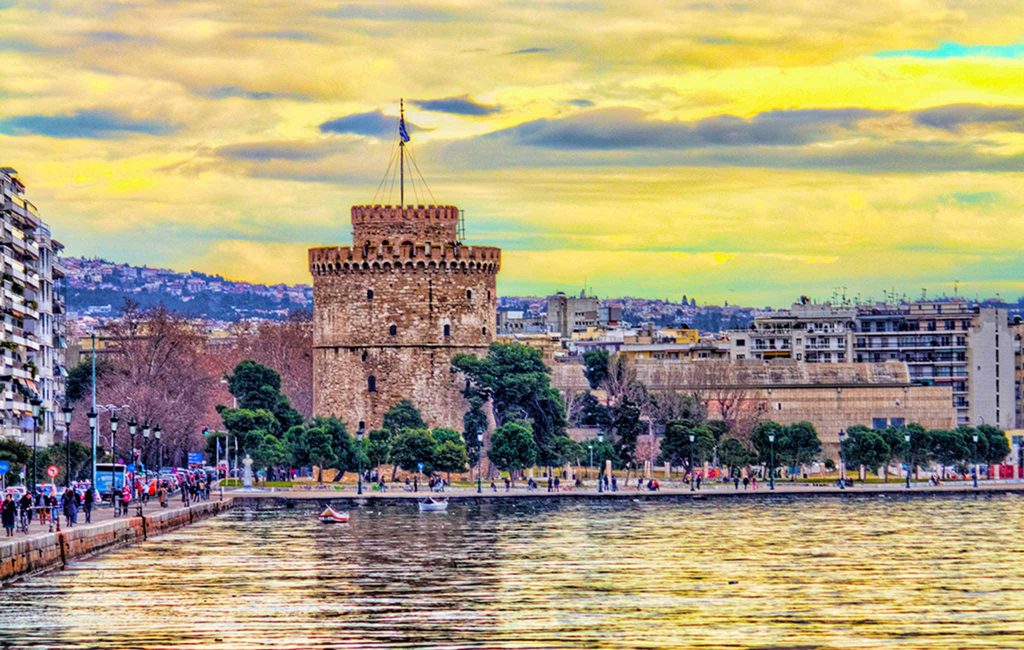Thessaloniki is the second most populous city and area of Greece. Often referred to as the co-capital of Greece. It is seat of the municipality, the Regional Unit of Thessaloniki, Region of Central Macedonia and the Decentralized Administration of Macedonia and Thrace. Since its founding by the Thessaloniki Cassander as a prosperous Hellenistic city until Ottoman rule leverages its strategic position and developing a multicultural city. Since 1912, with the end of the Balkan wars and the integration of the region in modern Greek State, Thessaloniki is the second largest city of Greece.
The population of the agglomeration is currently estimated at 790 824 inhabitants (2011).
The foundation of the city in the Hellenistic period coincides with a critical phase in the history of the Macedonian Kingdom, starting from the early death of Alexander the Great and to claim the throne of the Macedonian king from his descendants. General Cassander order to claim the throne of Macedonia married his half sister of Alexander the Great, Thessaloniki, in honor of which founded the city bringing together 26 townships located around the Thermaic Gulf.
2nd BC century the city was conquered by the Romans, like the rest of the Greek area and the headquarters of the Roman theme of Macedonia. The city’s strategic location appears first when selected as Imperial capital during the reign of Galerius, when it was built in the imperial palace.
The importance of it appeared later than the intention of transferring the capital of the Roman Empire by Constantine the Great to the east, and was one of the candidate cities which had been suggested as a replacement Rome to Byzantium finally selected. Despite the non-selection as capital acquires the title of reigning city and during the Byzantine period.
After the Ottoman conquest by the Ottomans in 1432, remains in the Ottoman Empire for almost five centuries. With the expulsion of the Jews from the Iberian peninsula and North Europe, Thessalonica acquires its own Jewish community.
This installation of Jews in Thessaloniki, highlighted the city as the most important global Jewish metropolis until at least the early 20th century. Especially since the mid-19th century, the city was the most cosmopolitan astikopoioumeno center of the Ottoman Empire and the most important pole of political movements and movements met in the long history.
By joining the body of the Greek State in 1912, the city’s population presents significant changes with the movement of the Muslim population and its replacement by refugee populations in Asia Minor and Eastern Thrace.
The population changes have contributed to changing the city’s demographic situation by strengthening the Greek element. The urban and architectural reorganization accelerated by the Great Fire of 1917 and the efforts of the new Greek government to add ancient Greek and European elements in the architectural style of the city, which led to the destruction of several Ottoman religious and functional buildings.
The major population changes seen with the holocaust of flourishing Jewish community by Nazi troops between the triple occupation during the Second World War, with the establishment of the Asia Minor and Thracian refugee population after the Asia Minor disaster in 1922 and the internal migration observed during the 50s and subsequently to major urban centers.


